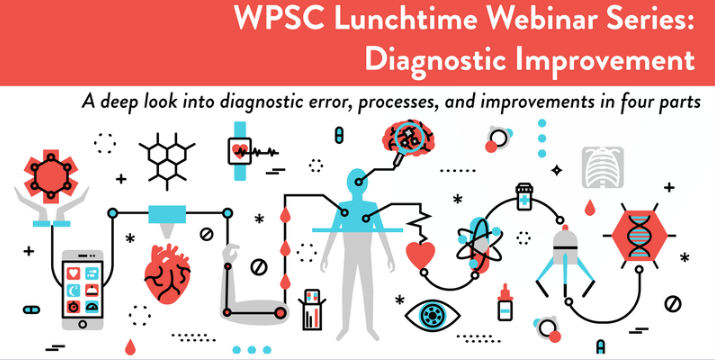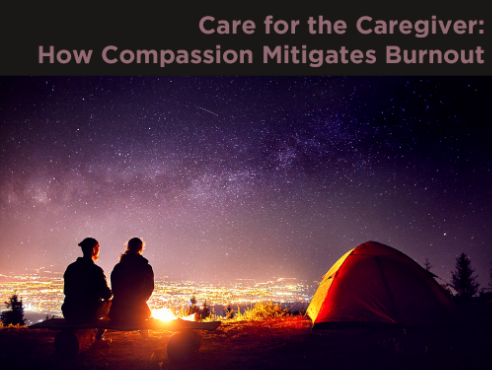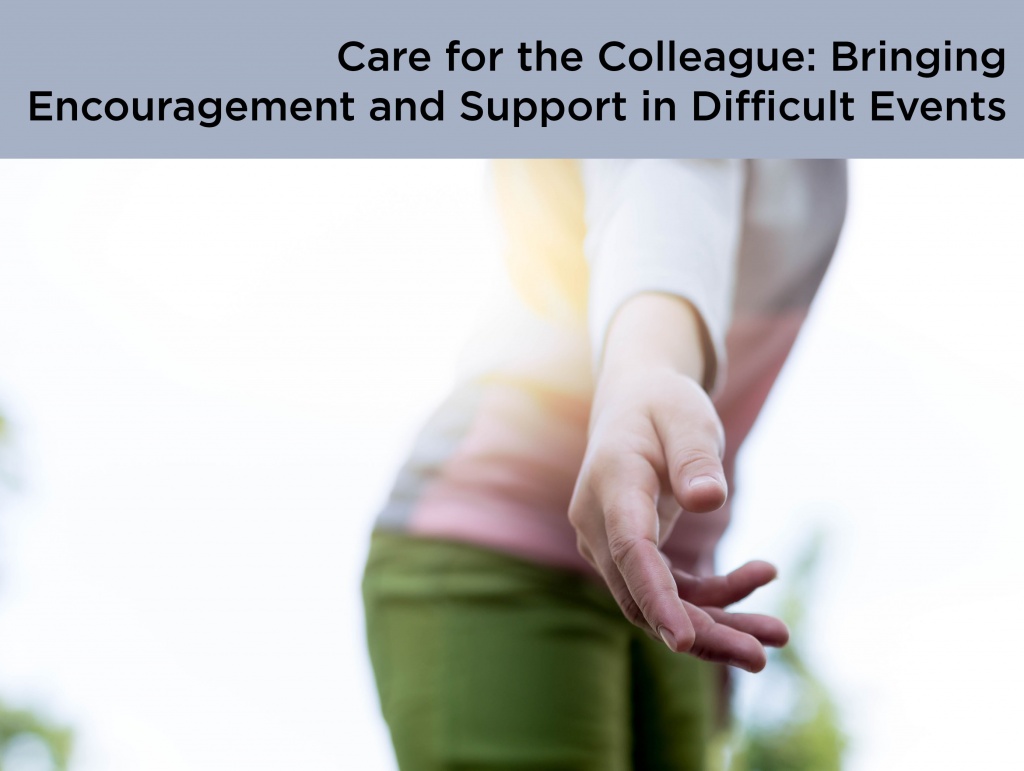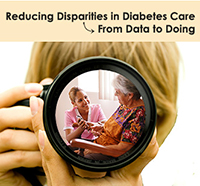Webinars
Recent Webinars
The Diagnostic Improvement Series
WPSC Lunchtime Webinar Series: Diagnostic Improvement
A deep look into diagnostic error, processes, and improvements in four parts.
January – April 2019
January 23
The Technology
The Impact of Health Informatics on Diagnosis
Presenter: Dr. Mark L. Graber
Organization: The Society to Improve Diagnosis in Medicine (SIDM)
Description: This kickoff presentation for the four-part Diagnostic Improvement Series set the stage with a brief epidemiology of the problem of Dx error and feature a discussion on the impact of health informatics on diagnosis. The presentation was hosted by Dr. Mark L. Graber, the Founder and President Emeritus of the Society to Improve Diagnosis in Medicine (SIDM). The electronic health record is clearly front and center in considering the impact of health IT on diagnosis; the presentation highlighted both the many ways the EHR facilitates and improves the diagnostic process, and a few of the frightening new problems that have emerged, including clinician burnout and the copy-paste nightmare. Health IT has also enabled entirely new opportunities to improve diagnosis, including telehealth, the use of ‘trigger tools’ to monitor diagnostic safety and quality, and the new decision-support tools that are available today to assist with everyday diagnosis. On the horizon are artificial intelligence applications that can diagnose novel conditions just from your voice or a photo of your face.
WEBINAR LINK: The recording from this webinar can be found here.
February 21
The Research
Improving Diagnosis through Research into the Physician’s Mind and the Patient’s Experience
Presenters: Ashley N.D. Meyer, PhD and Traber Davis Giardina, PhD, MSW
Organization: The Center for Innovations in Quality, Effectiveness and Safety (IQuESt), DeBakey VA Medical Center | Baylor College of Medicine
Description: Dr. Meyer, a cognitive psychologist, discussed theories and research data about the vulnerabilities that exist in clinician cognition as well as potential ways to combat those vulnerabilities to achieve more accurate, timely diagnoses for patients. Dr. Giardina is a social scientist and patient safety researcher at Michael E DeBakey and assistant professor at Baylor College of Medicine. She discussed the value of engaging patients in diagnostic error reporting as well as her recent work analyzing patient- and family-reported error narratives to identify factors that contribute to diagnostic error.
WEBINAR LINK: The recording from this webinar can be found here.
March 20
The Patients
Improving Diagnosis Through Patient and Family Engagement
Presenter: Sue Sheridan
Organization: The Society to Improve Diagnosis in Medicine (SIDM)
Description: This presentation introduced the National Academy of Medicine’s (NAM) definition of diagnostic error and the diagnostic process framework as well as the role of patients and family members as co-producers of improved diagnosis. The presenter, Sue Sheridan, Director of Patient Engagement at SIDM, mapped two diagnostic error case studies onto the NAM diagnostic framework identifying breakdowns in the patient’s diagnostic journey that led to patient harm as well as opportunities for patient and family engagement. The presenter shared recent patient focus group results and current tools, methods, and strategies that are currently being used by healthcare systems, clinicians and practices to engage patients and family members in improving diagnostic safety and quality.
WEBINAR LINK: The recording from this webinar can be found here.
April 24
The Providers
Team-Based Approaches to the Diagnostic Process
Presenters: Sheryl Kalbach, MSW, Patient and Family Experience Specialist; Kay Rawlings, parent of a Seattle Children’s patient; Craig Jackson, Neonatologist and Pediatrics Professor
Organization: Experience Department at Seattle Children’s Hospital
Description: A panel comprised of Sheryl Kalbach, Social Worker and Patient and Family Experience Specialist at Seattle Children’s Hospital; Kay Rawlings, a parent of an SC patient; and SC neonatologist and pediatrics professor Craig Jackson brought their experiences together to share advice on improving diagnosis and the patient experience through relationship building, transparency, and collaborative care — much of it through improving the “soft skills” involved in diagnosis, error disclosure, follow-up, and support. This talk illuminated how a provider’s approach to communication and collaboration colors the experience of the patient and family and include a parent’s valuable first-hand take on such an experience and her advice for improving it. This webinar was appropriate for all providers and clinicians, patient safety & quality professionals, patient engagement specialists, risk managers, patient advocates, and anyone concerned with improving diagnosis and the experience of patients and families involved in care.
WEBINAR LINK: The recording from this webinar can be found here.
The Care for the Colleague Series
November 29th, 2018 | Care for the Caregiver: How Compassion Mitigates Burnout. Wrapping up our Care for the Colleague series, we turn to the crucial topic of burnout, and how to address, reduce, and prevent it with provider-focused compassion. In this lunchtime webinar, Michael J. Goldberg from Seattle Children’s Hospital and the Schwartz Center for Compassionate Healthcare (developer of the popular Schwartz Rounds) covered the harm burnout poses to both providers and patients; why medicine has lagged behind other industries in understanding this harmful phenomenon; how neuroscience can serve to help us understand and respond to burnout; and how to create a useful anti-burnout framework with compassion at its center. The framework recognizes that the experience of the care provider drives the experience of the patient and family. Its design is to provide compassion and collaboration at three levels: the individual caregiver, their teams, and organizational leadership. This webinar is appropriate for patient and quality officers and executives, nurses, physicians, front-line clinicians, and anyone concerned with reducing and preventing burnout and increasing compassion in the medical workplace.
WEBINAR LINK: The recording from this webinar can be found here.
SLIDES LINK: The slides from this webinar can be found here.
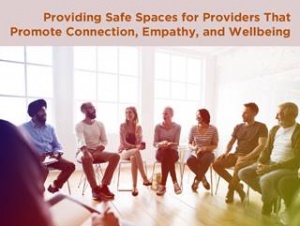 October 25th, 2018 | Providing Safe Spaces for Providers That Promote Connection, Empathy, and Wellbeing. In discussing care for the colleague, the question of how to build compassion for your providers into the system is a crucial one for healthcare organizations to address. Balint groups are a well-established format for discussion of cases that are challenging for providers, from complex patient interactions to unexpected events, with a goal of helping participants transform uncertainty, confusion, and difficulty in the patient-provider relationship into a more therapeutic alliance. Providers can derive benefit from these safe spaces that allow them to process comfortably with other providers and compare notes, while benefits to the patient can flow downstream in the form of improved care and outcomes — in fact, Balint groups were first formed in London in the 1950s by psychoanalysts Michael and Enid Balint who coined the term “patient-centered medicine.” Led by Dr. Robbie Sherman, Medical Director for the Patient Experience and Physician Development at the Polyclinic, this presentation will inform the audience about the structure of Balint groups, how they help to foster well-being, prevent burnout, and offer positive effects to patients, and how participants can go about joining or forming a Balint group if they are interested. This webinar is appropriate for physicians, nurses, front-line clinicians, safety and quality officers and executives, patient advocates, and anyone with concern for the importance of building compassion into both sides of the patient-provider relationship.
October 25th, 2018 | Providing Safe Spaces for Providers That Promote Connection, Empathy, and Wellbeing. In discussing care for the colleague, the question of how to build compassion for your providers into the system is a crucial one for healthcare organizations to address. Balint groups are a well-established format for discussion of cases that are challenging for providers, from complex patient interactions to unexpected events, with a goal of helping participants transform uncertainty, confusion, and difficulty in the patient-provider relationship into a more therapeutic alliance. Providers can derive benefit from these safe spaces that allow them to process comfortably with other providers and compare notes, while benefits to the patient can flow downstream in the form of improved care and outcomes — in fact, Balint groups were first formed in London in the 1950s by psychoanalysts Michael and Enid Balint who coined the term “patient-centered medicine.” Led by Dr. Robbie Sherman, Medical Director for the Patient Experience and Physician Development at the Polyclinic, this presentation will inform the audience about the structure of Balint groups, how they help to foster well-being, prevent burnout, and offer positive effects to patients, and how participants can go about joining or forming a Balint group if they are interested. This webinar is appropriate for physicians, nurses, front-line clinicians, safety and quality officers and executives, patient advocates, and anyone with concern for the importance of building compassion into both sides of the patient-provider relationship.
WEBINAR LINK: The recording from this webinar can be found here.
SLIDES LINK: The slides from this webinar can be found here.
September 27th, 2018 | Care for the Colleague: Bringing Encouragement and Support in Difficult Events. Learn about designing, implementing, and monitoring a successful Care for the Colleague program! Presented by Kit Hoffman with first-hand experience of setting up such a program at Confluence Health, this webinar offers listeners a chance to learn about designing automatic, non-punitive support that reduces psychological, physical, and professional distress for healthcare professionals and equips them to deliver safe, compassionate care. Kit will share the unique approach they’ve brought to this effort in designing Confluence’s BESIDE program, incorporating a mental health professional into the process, and go over research identifying key elements of Care for the Colleague programs with practical steps for implementation and evaluation. Finally, you will learn brief skills to help you respond to a healthcare professional who has had an adverse or stressful patient event. This webinar is appropriate for front-line clinicians, patient safety and quality professionals, mental health professionals, healthcare leadership, and anyone else interested in learning about implementing care for the colleague in the workplace.
WEBINAR LINK: The recording from this webinar can be found here.
SLIDES LINK: The slides from this webinar can be found here.
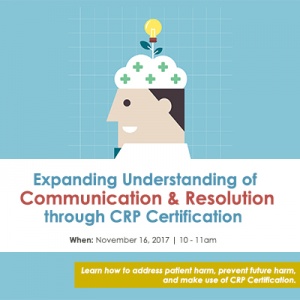 November 16th, 2017 | Expanding Understanding of Communication & Resolution through CRP Certification with Dr. Tom Gallagher, Mike Farrell, Marcia Rhodes, and Dr. Timothy Dellit. Communication and Resolution Programs (CRPs) are the emerging best practice for addressing patient harm when it happens and preventing it in the future. Following a successful CRP Leadership Retreat in September, we want to provide healthcare leaders some guidance on where to go next to learn more about becoming involved in CRP efforts. In particular this webinar will highlight CRP Certification, a unique activity being piloted here in Washington that allows both providers and healthcare organizations an opportunity for focused feedback on their use of a CRP after an episode of care. This webinar is appropriate for front-line clinicians, hospital administrators, and anyone involved or interested in reshaping responses to patient harm while also making strides to prevent it.
November 16th, 2017 | Expanding Understanding of Communication & Resolution through CRP Certification with Dr. Tom Gallagher, Mike Farrell, Marcia Rhodes, and Dr. Timothy Dellit. Communication and Resolution Programs (CRPs) are the emerging best practice for addressing patient harm when it happens and preventing it in the future. Following a successful CRP Leadership Retreat in September, we want to provide healthcare leaders some guidance on where to go next to learn more about becoming involved in CRP efforts. In particular this webinar will highlight CRP Certification, a unique activity being piloted here in Washington that allows both providers and healthcare organizations an opportunity for focused feedback on their use of a CRP after an episode of care. This webinar is appropriate for front-line clinicians, hospital administrators, and anyone involved or interested in reshaping responses to patient harm while also making strides to prevent it.
The Bias & Inequities Series
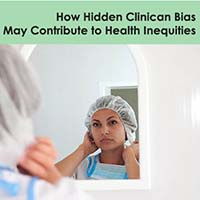 October 4th, 2017 | How Clinician Bias May Contribute to Health Inequities with Nancy Fisher of CMS. How can unintentional clinician bias manifest into patient harm? What about more overt bias? Dr. Nancy Fisher, known affectionately by many as Doc Nancy, has spent much of her career trying to address harmful bias and the health inequities it causes. In her philosophy, medicine is not just a science, but an art, an interpersonal relationship, and a communication process, much of which is non-verbal. Without these elements, poor quality of care ensues – in itself a health inequity. In this webinar, Dr. Nancy Fisher will explore these ideas in sharing how bias, by putting an inaccurate focus on a patient’s identity, actually results in making care less patient-centered. More importantly, she will explore how bias can be identified and addressed on the pathway to fixing this often hidden, yet extremely critical issue. This webinar is appropriate for front-line clinicians, patient safety and quality administrators, and anyone involved or interested in making strides in solving biases and inequities in the healthcare system.
October 4th, 2017 | How Clinician Bias May Contribute to Health Inequities with Nancy Fisher of CMS. How can unintentional clinician bias manifest into patient harm? What about more overt bias? Dr. Nancy Fisher, known affectionately by many as Doc Nancy, has spent much of her career trying to address harmful bias and the health inequities it causes. In her philosophy, medicine is not just a science, but an art, an interpersonal relationship, and a communication process, much of which is non-verbal. Without these elements, poor quality of care ensues – in itself a health inequity. In this webinar, Dr. Nancy Fisher will explore these ideas in sharing how bias, by putting an inaccurate focus on a patient’s identity, actually results in making care less patient-centered. More importantly, she will explore how bias can be identified and addressed on the pathway to fixing this often hidden, yet extremely critical issue. This webinar is appropriate for front-line clinicians, patient safety and quality administrators, and anyone involved or interested in making strides in solving biases and inequities in the healthcare system.
September 21st, 2017 | Reducing Disparities in Diabetes Care: From Data to Doing with Lisa Packard of Qualis Health. It’s no secret that for those in historically underserved populations, daily management of health conditions poses unique challenges. In this webinar, we looked at these challenges through the lens of health equity and social determinants of health with a focus on diabetes, a hugely prevalent disease that is widely known to disproportionately affect underserved populations. Presenter Lisa Packard, who has spent years focused on health inequities and diabetes, shared how diabetes patients can take charge of their health through community-based workshops teaching positive self-management techniques. She also went over how healthcare professionals can help support these individuals, foster the linkages between communities and clinics/health systems, and find or implement these kinds of trainings – particularly the evidence-backed Diabetes Self-Management Program (DSMP) workshops. Lisa also reviewed the evidence behind the Diabetes Prevention Program (DPP) and quality improvement opportunities that can be identified using Medicare claims data. This webinar was appropriate for front-line clinicians, patient safety and quality improvement professionals, and anyone involved or interested in making strides in health disparities and/or diabetes work.
 June 28th, 2017 | Addressing Bias, Language Barriers, and Inequities in Healthcare with Cheri Wilson of IHI. Have you ever wondered why sometimes our thoughts don’t match our actions? In this interactive webinar, participants learned more about implicit bias and how it affects our everyday lives in everything from healthcare and beyond, to areas of criminal justice, employment, housing, and media. Most importantly, participants were equipped with tips and debiasing techniques for mitigating implicit bias as a strategy for reducing disparities in health and healthcare and for promoting health equity. This webinar was appropriate for front-line clinicians, patient safety and quality improvement professionals, and anyone involved or interested in making strides in health equity work.
June 28th, 2017 | Addressing Bias, Language Barriers, and Inequities in Healthcare with Cheri Wilson of IHI. Have you ever wondered why sometimes our thoughts don’t match our actions? In this interactive webinar, participants learned more about implicit bias and how it affects our everyday lives in everything from healthcare and beyond, to areas of criminal justice, employment, housing, and media. Most importantly, participants were equipped with tips and debiasing techniques for mitigating implicit bias as a strategy for reducing disparities in health and healthcare and for promoting health equity. This webinar was appropriate for front-line clinicians, patient safety and quality improvement professionals, and anyone involved or interested in making strides in health equity work.
The Workplace Safety Series
 March 29th, 2017 | Applying the 6 Elements of Safety Risk Assessment to Healthcare Redesign with David Frum of Salus Architecture and Mary McHugh of the Northwest Kidney Centers. According to researchers with the Agency for Healthcare Research and Quality, there is a growing evidence-base that “designing for safety and quality can improve patient outcomes and safety, promote healing, increase patient satisfaction, and reduce costs.” David Frum and Mary McHugh joined us to share lessons about this important element of safety culture that is too often overlooked. The webinar focused on defining the Center for Health Design’s 6 elements of Safety Risk Assessment – Infection Control, Patient Handling, Medication Safety, Falls, Behavioral Health, and Security – and illustrated how they can be applied to the design of medical environments. In particular, having worked closely on a project redesigning an outpatient setting at the Northwest Kidney Centers, the speakers provided real-world examples of how these elements have been applied to a dialysis clinic, though the concepts were applicable to other medical settings as well. This webinar was appropriate for hospital and clinic administrators, nursing leaders, facility design professionals, employee health professionals, quality improvement professionals, infection prevention professionals, pharmacists, safety officers, and anyone involved in a healthcare setting who was interested in getting an in-depth look at Safety Risk Assessment, healthcare redesign, and human factors engineering with compelling first-person examples.
March 29th, 2017 | Applying the 6 Elements of Safety Risk Assessment to Healthcare Redesign with David Frum of Salus Architecture and Mary McHugh of the Northwest Kidney Centers. According to researchers with the Agency for Healthcare Research and Quality, there is a growing evidence-base that “designing for safety and quality can improve patient outcomes and safety, promote healing, increase patient satisfaction, and reduce costs.” David Frum and Mary McHugh joined us to share lessons about this important element of safety culture that is too often overlooked. The webinar focused on defining the Center for Health Design’s 6 elements of Safety Risk Assessment – Infection Control, Patient Handling, Medication Safety, Falls, Behavioral Health, and Security – and illustrated how they can be applied to the design of medical environments. In particular, having worked closely on a project redesigning an outpatient setting at the Northwest Kidney Centers, the speakers provided real-world examples of how these elements have been applied to a dialysis clinic, though the concepts were applicable to other medical settings as well. This webinar was appropriate for hospital and clinic administrators, nursing leaders, facility design professionals, employee health professionals, quality improvement professionals, infection prevention professionals, pharmacists, safety officers, and anyone involved in a healthcare setting who was interested in getting an in-depth look at Safety Risk Assessment, healthcare redesign, and human factors engineering with compelling first-person examples.
 February 22nd, 2017 | “We’re All in This Together”: Team Strategies for Workplace Violence Prevention with Dr. Nan Yragui of the Washington State Department of Labor and Industries. According to the Bureau of Labor Statistics, workers in healthcare and social assistance settings are 5 times more likely to be victims of nonfatal violent acts than the average worker in any other occupation, with ER nurses being at the highest risk and prevalence unfortunately on the rise. In light of these facts, this important webinar shared proven, high-performing strategies for healthcare teams to employ in preventing workplace violence and promoting a culture of safety for both patients and staff. Dr. Yragui, who has spent years dedicated to studying workplace aggression, introduced lessons learned from a qualitative study conducted by herself and her SHARP research team, findings from nursing staff focus groups and supervisor interviews, team support strategies for safety, and how patient safety is linked to staff safety through these prevention strategies. This webinar was appropriate for nurses, front-line clinicians, physicians, hospital administrators, and anyone involved in a healthcare setting who would like to arm themselves with valuable knowledge for enhancing safety culture in the workplace.
February 22nd, 2017 | “We’re All in This Together”: Team Strategies for Workplace Violence Prevention with Dr. Nan Yragui of the Washington State Department of Labor and Industries. According to the Bureau of Labor Statistics, workers in healthcare and social assistance settings are 5 times more likely to be victims of nonfatal violent acts than the average worker in any other occupation, with ER nurses being at the highest risk and prevalence unfortunately on the rise. In light of these facts, this important webinar shared proven, high-performing strategies for healthcare teams to employ in preventing workplace violence and promoting a culture of safety for both patients and staff. Dr. Yragui, who has spent years dedicated to studying workplace aggression, introduced lessons learned from a qualitative study conducted by herself and her SHARP research team, findings from nursing staff focus groups and supervisor interviews, team support strategies for safety, and how patient safety is linked to staff safety through these prevention strategies. This webinar was appropriate for nurses, front-line clinicians, physicians, hospital administrators, and anyone involved in a healthcare setting who would like to arm themselves with valuable knowledge for enhancing safety culture in the workplace.
The Addiction Treatment Series
October 26th, 2016 | Part two of the Addiction Treatment series: “Washington State’s Opioid Response Plan & What You Can Do to Help.” This unique webinar featured co-presenters with direct involvement in Washington State’s response to the opioid epidemic: Dr. Kathy Lofy of the Washington State Department of Health and Ginny Weir of the Dr. Robert Bree Collaborative. Especially relevant following the recent opioid crisis compact signed by Governor Inslee, this three-part presentation shared 1) the epidemiology of the problem, with attention to population health inequities, 2) current work underway in Washington State to align prescribing practices with evidence-based guidelines, and 3) concrete ways healthcare professionals could help implement the goals of these initiatives from within their networks. This was a highly educational webinar appropriate for clinicians, prescribers, policy makers, hospital administrators, and anyone with a shared interest in contributing to opioid epidemic solutions in Washington State.
September 28th | Part one of the Addiction Treatment Series: “Current Tools in Behavioral Health and Addiction Care for Rural Healthcare and Beyond.” With so much in progress in the increasingly critical topic of addiction treatment and its integration with mental/behavioral health, it can be difficult for healthcare professionals to keep up with what kind of resources are available and how to utilize them. In this kick-off to our series, Dr. Ries of the UW Medical School familiarized listeners with current tools and resources available here in Washington State aimed at effectively caring for mental/behavioral health populations, addressing warning signs of addiction, employing intervention tools, and utilizing best practices for referral to treatment. These included expanded telehealth tools and the new UW PACC (Psychiatry and Addictions Case Consultation) program, designed to expand the behavioral health and addictions care capacity of healthcare professionals especially in remote, underserved areas. The webinar was appropriate for primary care providers, mental health or addictions providers, psychiatrists, and rural healthcare professionals.
Attending a Webinar
Have lunch with the Coalition! All teleconferences are from noon to 1 pm PST and are open to anyone interested. When you have sent your RSVP we will send an email no later than 24 hours before the webinar with instructions for joining the call. If you do not receive the instructions, please check your junk mail folder, then contact us by email or phone 206-204-7388 for assistance.
If you are a Coalition member, there is no charge for your participation. If your name or employer does not appear on the list of members, please contact us to arrange for payment. Non-members can pay their participation fee more conveniently online for $45, or via invoice for $40. Please note that the charge for non-members is per line, and multiple people are welcome to share one line.
Provider approved by the California Board of Registered Nursing, Provider Number CEP16359 for 1.2 contact hours.
Past Webinars & Resources
Click here to view past Webinars and their associated resources.
Share Your Ideas!
If you have ideas for future topics, or speakers who would make excellent presenters, or would like to join the group to help with topics and speakers, please contact us.

